8 Tips for Bicycle Touring Abroad
I used to think that international bicycle travel was only for braver souls. I envied those who could pedal away from a foreign airport, self-sufficient on their loaded bikes, cheerfully welcoming the confusion of a brand-new country. And not just any new country, but a really different one, like some exotic locale in Asia, Africa, or perhaps the Middle East. A place where the simplest tasks become puzzles for a visitor, where deeply ingrained assumptions about society are surfaced and challenged, and where the food tastes really strange.
Somehow, instead of disaster, these intrepid bicycle travelers brought home tales of touching kindness and stunningly beautiful landscapes. I marveled from afar as I read their stories, figuring they obviously knew something I didn’t. I mean, it’s not like you can just pack up your bike, fly to a totally unfamiliar country, and start pedaling, right? Right?
Well, it turns out that you can. Even without a guide, even if you’re alone, even if you’re female, even if you don’t speak the language, even if you’ve never done it before, you can. And once you’ve tried it, your world will never be the same.
Once you’ve tasted the adventure of international bicycle travel, you may never want to go back to “normal” travel.
International bicycle touring is a huge topic. I won’t pretend to advise on the details of a spin along EuroVelo Route 6 and an expedition through West Africa in the same post. I also won’t cover travel basics like researching visas, vaccinations, and current events, because this information is easy to find elsewhere.
Instead, I’ll sketch some general themes that make bicycle travel abroad different from touring at home, particularly if you’re venturing to a different continent and a substantially different culture.
1. Speak the Language of Bicycle Travel
Travel is a great way to practice a new language, but if your Thai or Kyrgyz are a little rusty, don’t let language worries stop you. Bicycle travel has a way of making one’s needs obvious. When a person on a loaded bike rolls by in the middle of a hailstorm or holds out an empty water bottle on a scorching day, nearly any human in the world intuitively understands what they’re looking for. Knowing a bit of the local language can certainly make life easier and invite deeper interactions, but you’d be surprised at how little you truly need to get by.
If you’re touring in a country with a very unfamiliar language, like the tonal languages of Asia that are notoriously hard for visitors to pick up, bring printed pictures or prepare to use a lot of hand signals. Charades for sleep (tilted head resting on two hands, palms together), food (move hand toward open mouth), water (mime drinking from a cup), or “which way do I go?” (point in different directions, shrug and raise eyebrows) are often widely understood. Get creative — you’d be surprised how much can be said with your hands, especially if you can mix in a few key spoken words.
If you have the chance to learn some vocabulary, focus on the typical bike touring conversations. It only takes a few miles to learn that most people just want to know a few things: “Where are you going?” and “Where did you come from?” As an obviously foreign visitor, you’ll be asked which country is home, how long you’re visiting for, and how you like the country you’re in.
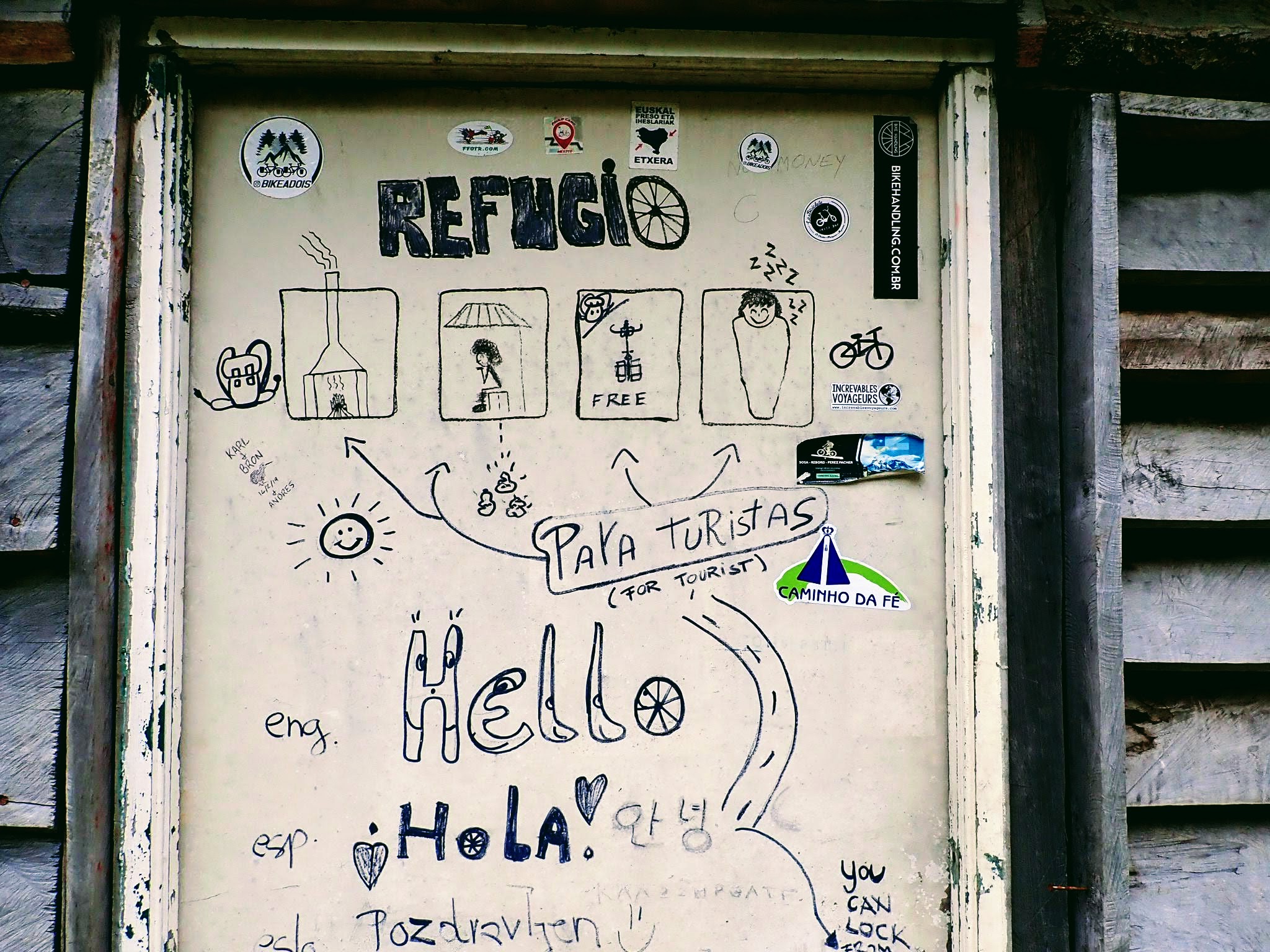
To make small talk about your trip, learn words like to, from, stay, go, start, stop, like, dislike, a little, a lot, and the length of your trip.
For practical matters, add these to your vocabulary: need, have, be, know, bicycle, road, guesthouse, water, food, eat, drink, sleep, car, truck, money, uphill, downhill, close, and far.
Depending on where you are, local words for challenges like gravel, pothole, road construction, mountain, rain, etc., might also be key.
Numbers can be fun and easy to learn but are also easily communicated with hand gestures or writing if necessary. The same goes for directions like left and right.
More essential are time-related words like days, weeks, months, tomorrow, today, and yesterday, which can be hard to communicate any other way. Don’t forget the basic responses of good, bad, yes, no, and maybe.
If you learn nothing else, at least master the universal “I’m making an effort” traveler vocabulary: hello, thank you, goodbye, and “It’s very good.” And when all else fails, a smile and some patience can speak volumes.
2. Adapt to the Local Diet
However you usually fuel your engine on the road, sooner or later you’ll wind up in a small roadside shop where nothing looks familiar. What’s a hungry cyclist to do? Eat mostly Oreo cookies — perplexingly available nearly the whole world over — for days on end? You could try, but from experience, it’s not recommended.
Instead of overdosing on local sweets and rice (or whatever the common cheap but carb-heavy staple is), seek out local versions of high-fat, high-protein foods. If meat is scarce, look for plant protein sources like beans. Where you see chickens, a nearly universal feature of rural life, you can find eggs. Keep an eye out for local specialties you might not have expected: moon cakes in parts of Asia, for example, make a surprisingly hearty snack.
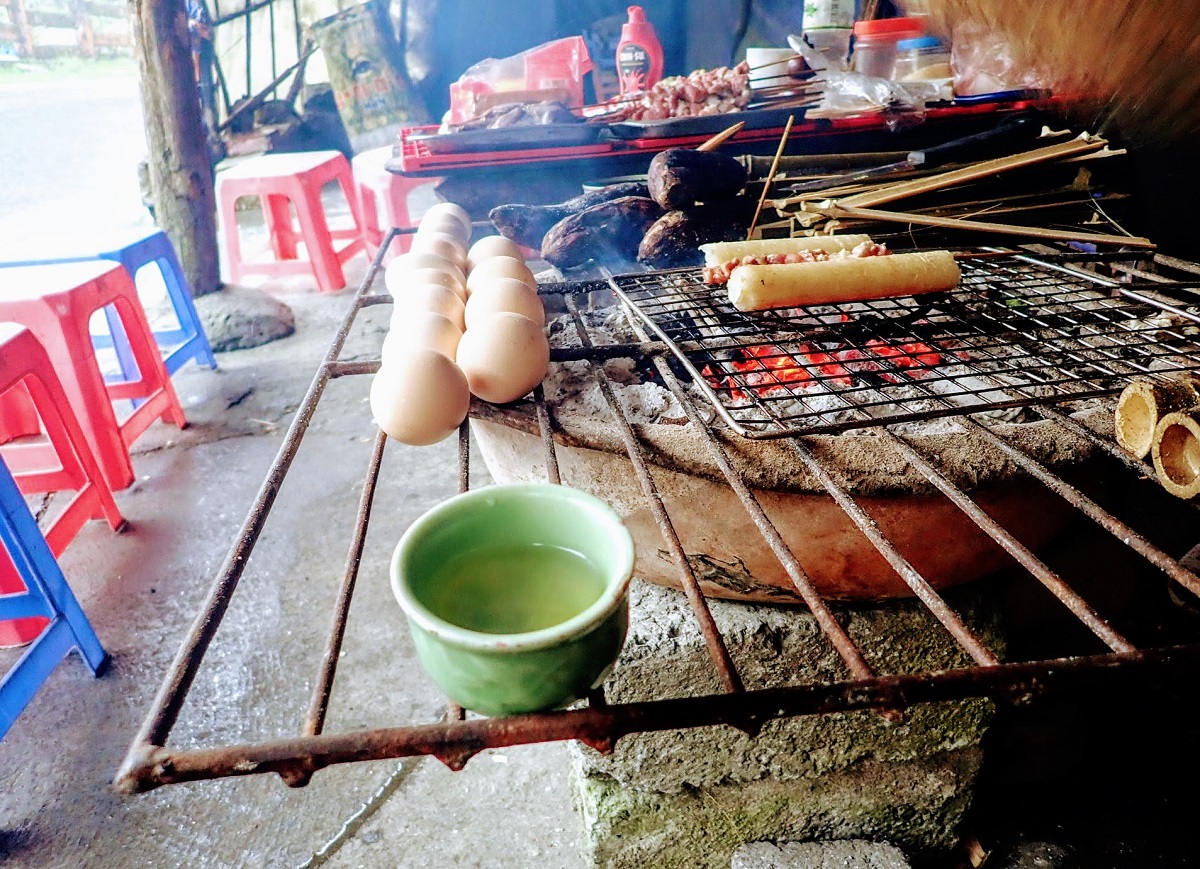
Convenience stores throughout the world, even in out-of-the-way villages, often stock basics like boxed milk, processed cheese, and peanuts. A jar of peanut butter stockpiled from the last city you passed through can transform bread and cookies into a satisfying snack. When evaluating packaged pastries or cookies, use the weight test: pick them all up and choose the one that feels heaviest. Chances are it has the most nutritional heft.
3. Go With the (Traffic) Flow
The dark side of bicycle travel, unfortunately, is the risk posed by sharing roads with motor vehicles. The usual safety suggestions — wear high-visibility clothes, a helmet, and a rearview mirror — apply anywhere you go in the world. Beyond that, your best bet is to ride in a way that’s predictable to local drivers.
The good news, for Americans at least, is that drivers in many other countries are more accustomed to sharing roads with bikes and pedestrians. (If you’re visiting America from another country, take note of the reverse!)
The challenging part is that driving styles in these places can feel intensely chaotic if you’re not used to them. In places where traffic laws feel like suggestions or infrastructure is lacking, the key is to embrace the organized chaos and go with the flow. If you see locals on bicycles, imitate them, and if not, take cues from motorbikes and scooters. Better yet, latch yourself (figuratively) onto a group of them and let them guide you through tricky junctions.
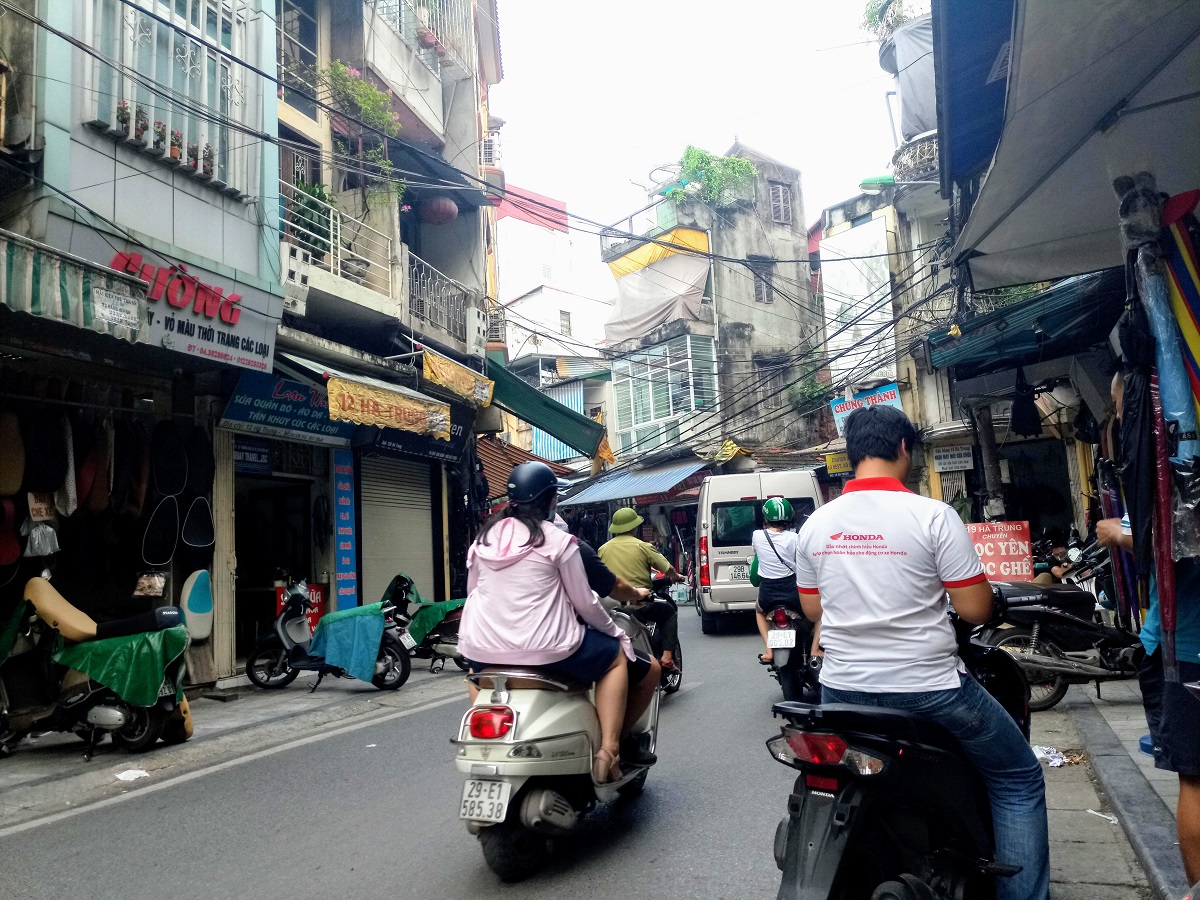
Be cautious about being too cautious in these environments. Your instinct to yield suddenly at a busy intersection might surprise the driver behind you, who was expecting you to just push slowly into the fray. Think slow, steady, and predictable; no sudden movements.
On faster roads where the speeds and stakes are higher, pay attention to how drivers respond to you. Do they give generous clearance when they pass, or do they barrel by as if you don’t exist? Do they honk first? Does the honk mean “Hello,” or “Heads up, I’m passing now,” or “Out of the way, I’m coming through!”?
It can take a few days, but once you learn to feel the pulse of the roads in a new country, riding with traffic becomes less stressful. You’ll develop a sense for when it’s safe to hold your line and when it’s time to bail into the roadside ditch. If the latter happens too often, it might be time to find an alternate route.
4. Find Creative Repair Help
Hopefully, you travel prepared with a good repair kit and the knowledge to use it. But if your trip is long enough or your luck bad enough, eventually you’ll experience a mechanical issue you can’t fix in a place where you can’t even remember the last time you saw a bicycle shop.
The good news is, bicycles are found everywhere in the world. The bad news is, they’re not all like yours. While you might get lucky and find a compatible part and a capable mechanic, it’s equally likely that the local bike expert has never seen your style of brakes or your particular type of gear shifter. It’s best to accept help graciously but cautiously, keeping a close eye on the process.
This is the beautiful thing about bicycle travel, and what makes it all the more magical in an unfamiliar place: it urges us to be open at the same time it puts us in control.
When bicycle-specific repair help isn’t available, motorbike repair shops can sometimes help with minor issues: parts that need grease, tires that need repairing, a tool you need but don’t have. In countries where motorbikes and scooters are common, repair shops are ubiquitous even in small towns. You may even get lucky and find a mechanical genius in one of these greasy garages.
When creativity and all local options are exhausted, sometimes there’s nothing for it but to bus or hitchhike to the nearest big city. Usually, you’ll find at least one decently stocked bicycle shop in the capital city of even the most infrastructure-poor country, or perhaps a network of helpful local cyclists. Parts can be shipped halfway around the world if you have the money and the time.
While all of this might be exciting, the best way to improve your chances of a smooth trip is to keep your bike well maintained, practice maintenance and repair at home, and pack a sensible tool kit.
5. Lose the Lycra
Lycra may be aerodynamic, but there’s no getting around it: to almost every non-cyclist on the planet, it looks silly. Even worse, in countries with a cultural emphasis on modesty — much of the Middle East, and parts of Asia and Africa for example — it can be offensive. While often considered a bigger issue for women, whose clothing and bodies are unfortunately a more globally polarized issue, even men can draw raised eyebrows with skin-tight shorts.
Some people will say they have a right to wear what makes them comfortable, and I agree with this in theory. But many people in the world do not agree, so this decision comes with consequences. While most folks will kindly overlook surprising clothing on a visiting cyclist, why not put a little effort into making our presence as socially comfortable as possible?
Baggy mountain bike–style overshorts are a great compromise for both men and women. A loose-fitting T-shirt, especially made from stink-resistant merino wool, is a great way to modestly cover shoulders and also protect them from the sun. In all but the most conservative countries, covering knees and shoulders should be sufficient. This style of clothing also works great for rest days and time off the bike, meaning you can pack lighter and bring less clothing.
Clothing norms vary greatly by country. Do some research for your specific destination. Be aware that advice for general tourists might not work as well for bicycle travelers. As a cyclist passing through more rural areas than an average tourist, what felt normal in a diverse and modern city might later feel awkwardly out of place in a small village.
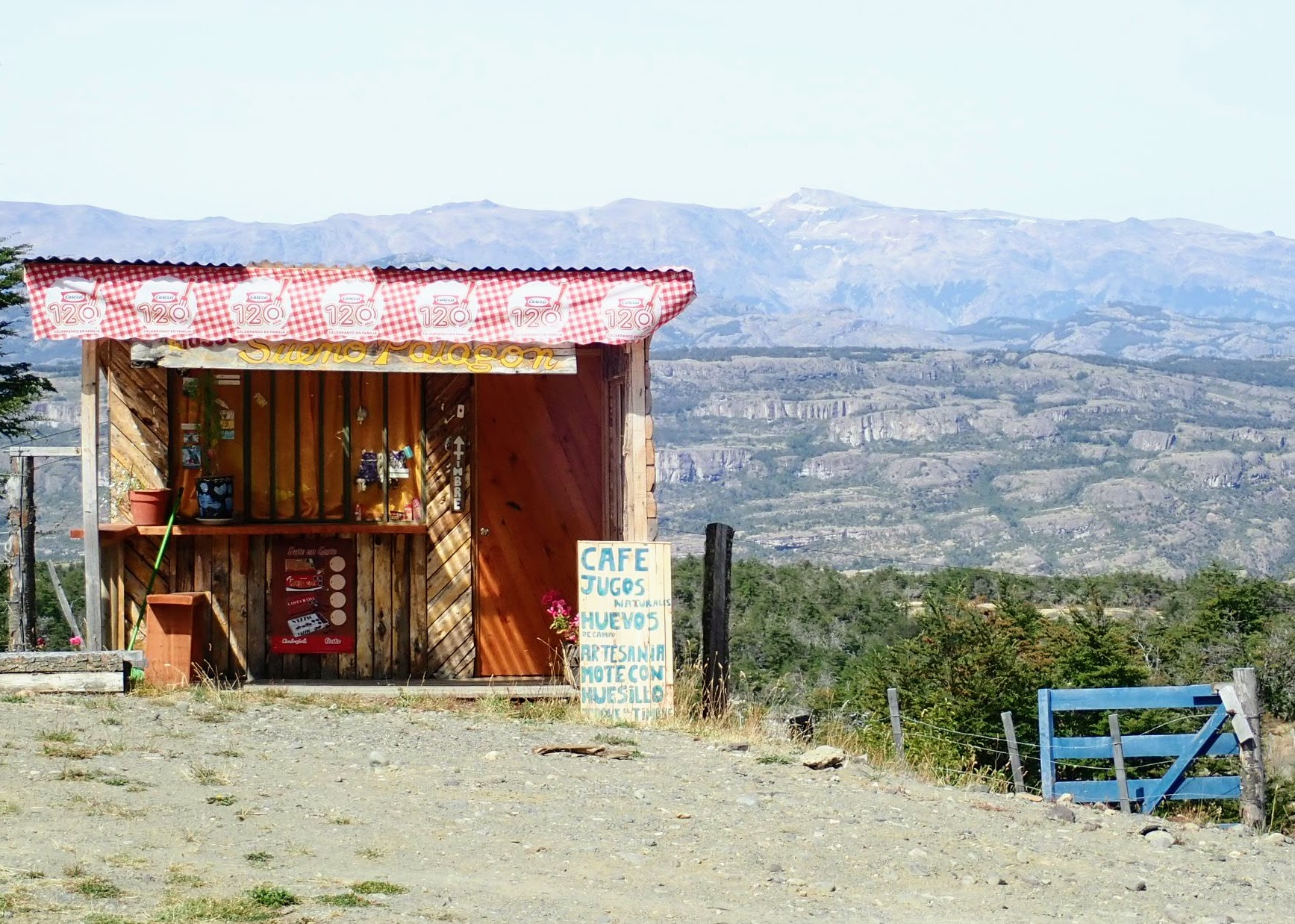
6. Choose Campsites Wisely
Camping is popular with bicycle travelers because it saves money and unlocks sparsely populated areas. But, is it safe to camp in an unfamiliar country where locals may not be expecting it? Oftentimes, yes, but it’s best to read trip reports from other cyclists for more details. Depending on an area’s laws, population density, attitudes toward private property, and prevalence of crime, the advisability and enjoyment of camping can vary widely.
If you choose to camp outside of organized campgrounds, the general advice is to either be widely seen — camped in a town park or next to the village elder’s home, for example — or not seen at all, perhaps hidden behind a hill with no visibility from the road. Avoid the “in-betweens” if you have any concerns about safety. These are places where you could easily be discovered but no one else knows you’re there.
Generally speaking, rural areas and small towns are better for camping out in the open. Remote areas with few residents are ideal for stealth camping but very hard to find in certain regions. Be wary of camping in unfamiliar urban areas, even if you think you’re well-hidden.
If looking for an uninterrupted stay, avoid areas with signs of frequent human activity, such as active farmland, roads and trails, or areas with fire pits. Or plan to make camp late and leave early. Private property may or may not be fair game depending on the country you’re in, so make a practice of asking first.
7. Prepare to Be the Center of Attention
You could stick to common routes that see a lot of foreigners, in which case the local people will mostly ignore you. You’ll probably meet some other interesting travelers, which is great, but eventually it’s well worth venturing off the beaten path. When you do, prepare to be the main attraction.
In a place where visitors are a rarity and nobody looks like you, who can blame the shopkeeper for snapping a selfie with you or the gaggle of children for staring? Sometimes the conspicuousness of bicycle travel is part of its charm, but the constant attention can be draining. Even the most extroverted cyclist, stopping for a snack break (or worse, a bathroom break!) in rural India or Sub-Saharan Africa, has no doubt wished for a moment of solitude.
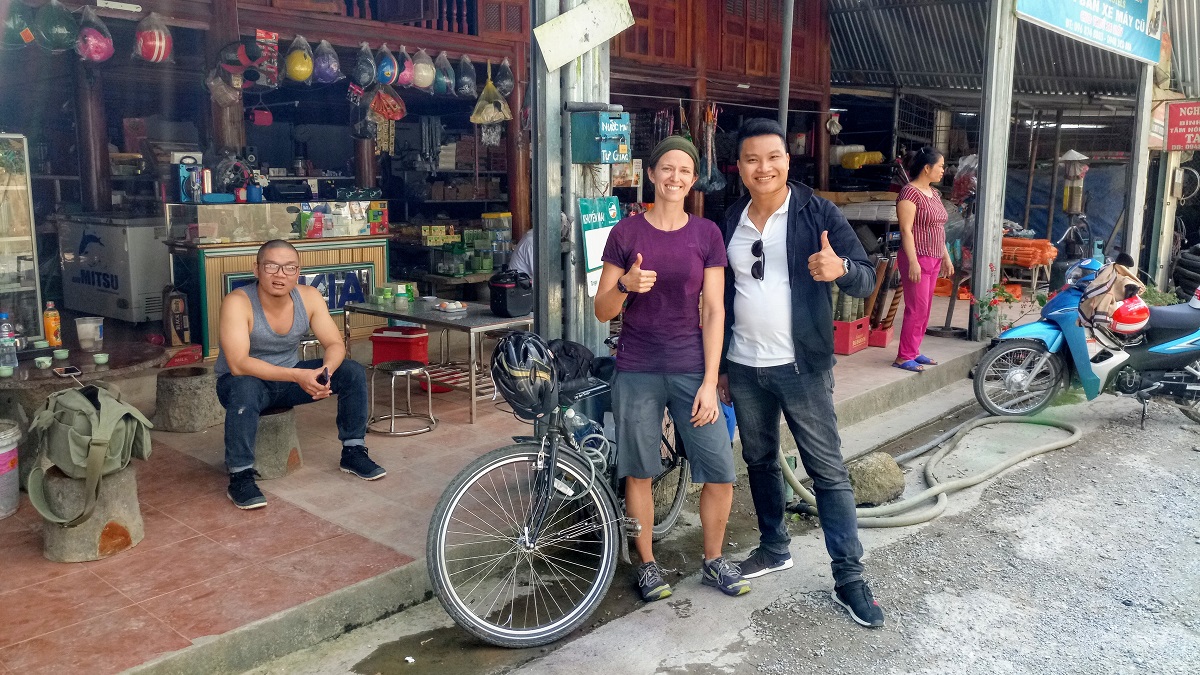
If you find yourself surrounded by a curious crowd, your patience tested to the limit after a hard day of riding, here are a few tips that might help.
First, put yourself in their place: you’d be curious too! In the face of a frustrating language barrier, speaking calmly in your own language can help defuse the awkwardness of silent staring even if you’re not understood. Try to pick out a single person and engage with them, which can melt away the you-versus-them tension of an anonymous crowd.
Finally, remember that while you may be asked the same questions over and over, you may also be the first bicycle traveler each asker has encountered. They are simply doing the same thing you’re doing by traveling: indulging in curiosity.
8. Plan to Be Flexible
Personally, I have a love-hate relationship with the unpredictability of bicycle travel, especially in unfamiliar environments. It forces us, in a tidy way rarely feasible in daily life, to give up control of the details. It’s like a laboratory for safely embracing the fragility of life.
Still, philosophizing aside, most of us feel more comfortable getting on an airplane to a faraway land with a plan at the ready. So sure, go ahead and plan your route. Estimate how many miles you’ll ride each day, where you’ll take a rest day, and what kind of accommodation you’ll sleep at.
And then, when you get there … be willing to blow it all to bits. Take the detour the locals suggest. Hop off the busy highway onto a side road or a bus. Stop riding early and share a meal when invited.
This is the beautiful thing about bicycle travel, and what makes it all the more magical in an unfamiliar place: it urges us to be open at the same time it puts us in control.
Without a guide book, tour operator, or bus schedule structuring our trip, we’re free to explore deeply and on our own terms.
So don’t worry about the language barrier, the culture shock, the weird food, or the scary roads. Well, maybe worry a little bit about that last one, and take a backroad instead. But know that it’s all part of the process. Just take your bike, your gear, your passport, and go.
Once you’ve tasted the freedom of discovering a new country by bicycle, you too will know the secret: it’s the perfect way to travel, and anyone can do it.


